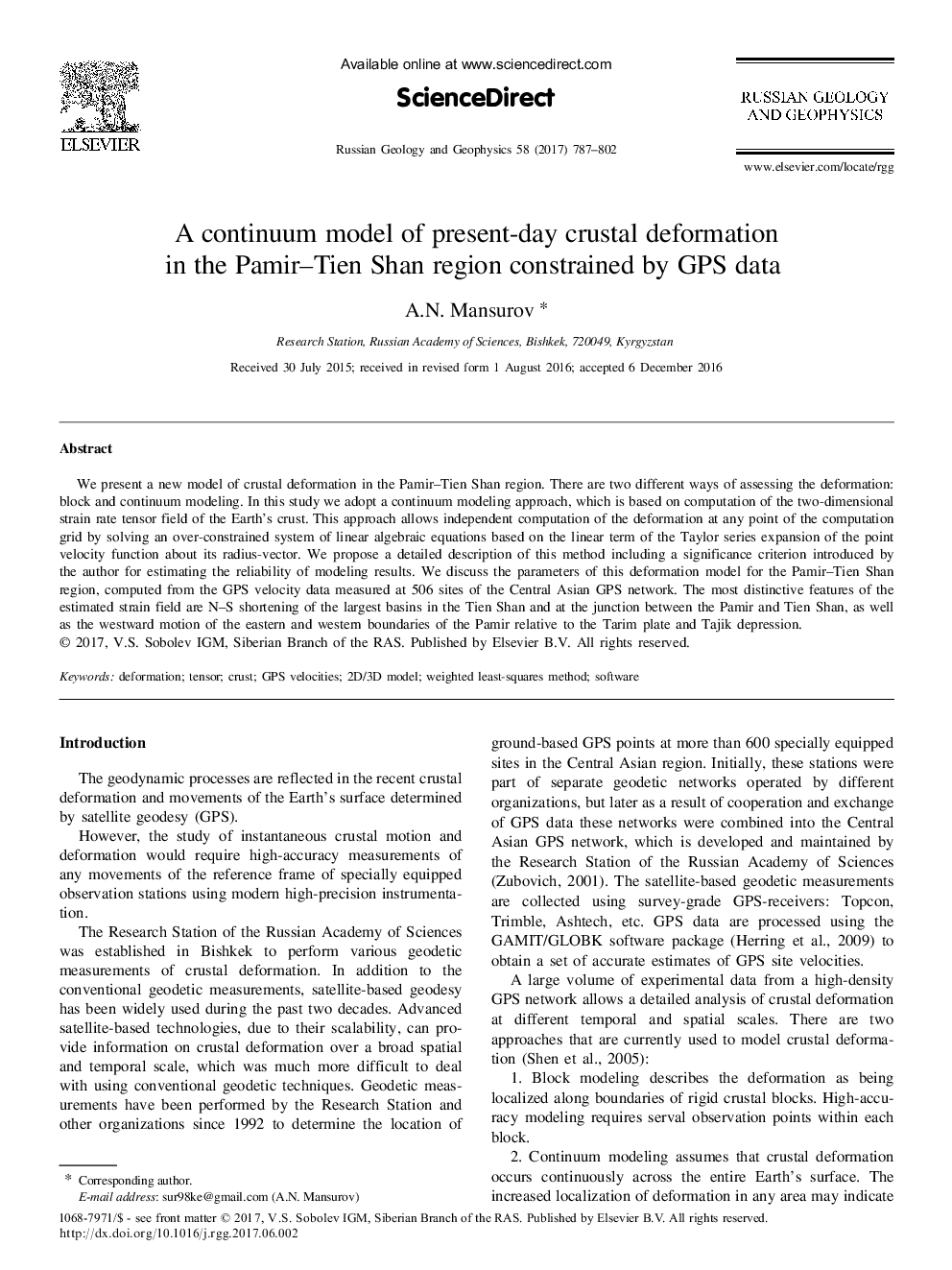| Article ID | Journal | Published Year | Pages | File Type |
|---|---|---|---|---|
| 5786973 | Russian Geology and Geophysics | 2017 | 16 Pages |
Abstract
We present a new model of crustal deformation in the Pamir-Tien Shan region. There are two different ways of assessing the deformation: block and continuum modeling. In this study we adopt a continuum modeling approach, which is based on computation of the two-dimensional strain rate tensor field of the Earth's crust. This approach allows independent computation of the deformation at any point of the computation grid by solving an over-constrained system of linear algebraic equations based on the linear term of the Taylor series expansion of the point velocity function about its radius-vector. We propose a detailed description of this method including a significance criterion introduced by the author for estimating the reliability of modeling results. We discuss the parameters of this deformation model for the Pamir-Tien Shan region, computed from the GPS velocity data measured at 506 sites of the Central Asian GPS network. The most distinctive features of the estimated strain field are N-S shortening of the largest basins in the Tien Shan and at the junction between the Pamir and Tien Shan, as well as the westward motion of the eastern and western boundaries of the Pamir relative to the Tarim plate and Tajik depression.
Keywords
Related Topics
Physical Sciences and Engineering
Earth and Planetary Sciences
Geology
Authors
A.N. Mansurov,
